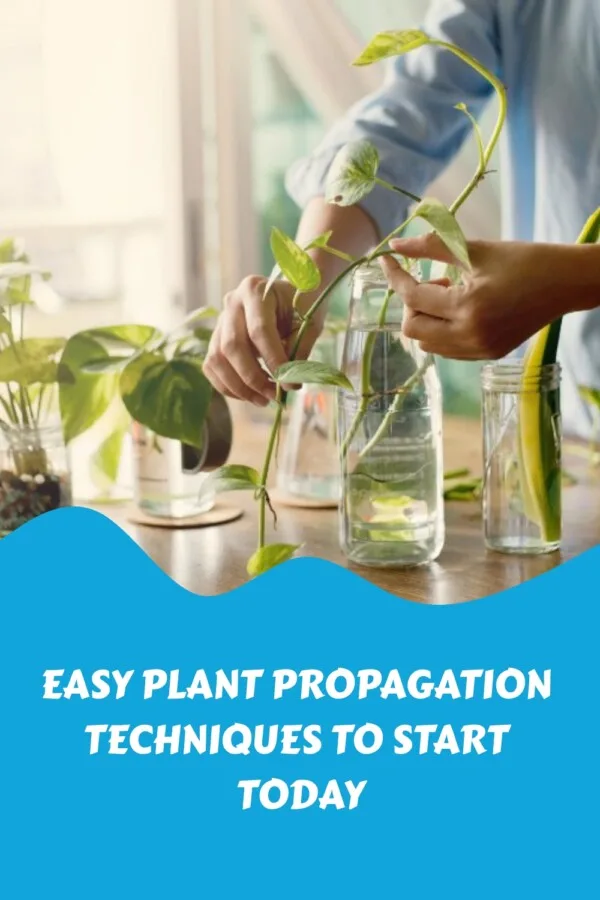Plant propagation is the process of growing new plants from existing ones. It’s a great way to increase your collection of favorite plants at home, increase your harvest, or a way to grow new varieties that you can share with friends and family.
There are many different types of plant propagation techniques, from simple cuttings to more advanced techniques like grafting or layering. In this article, we’ll go over some easy ways to propagate your favorite houseplants and flowers at home.
What is Plant Propagation?
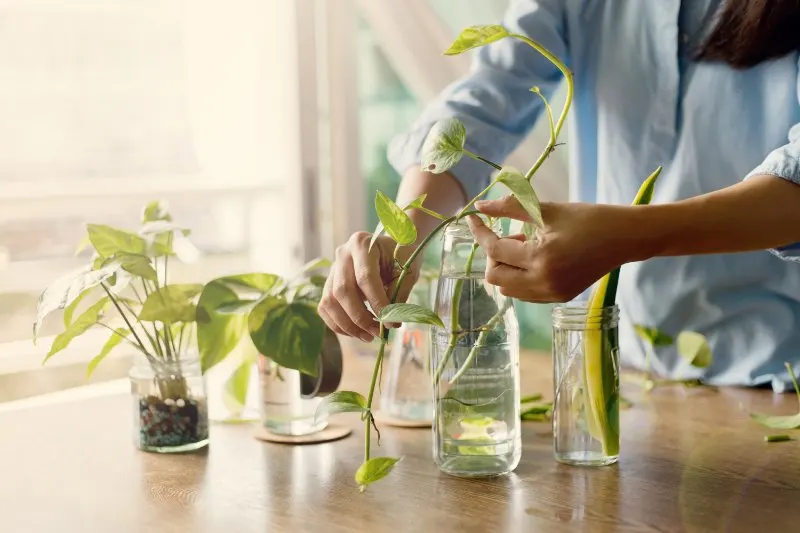
Plant propagation is the technique of creating new plants from a parent plant. It is a process that has been used for centuries to produce one plant from another, often with the use of cuttings taken from a larger plant.
Plant propagation can involve taking a cutting and rooting it in soil or water, dividing an established root system, or using other techniques such as tissue culture or air layering.
The goal of plant propagation is to reproduce as close to an exact replica of the parent plant. By utilizing this technique, you can create new plants without needing to purchase them from nurseries or garden centers.
Plant propagation is an invaluable tool in gardening and landscaping as it allows you to create more plants with very little effort and expense.
What’s the Difference Between Plant Reproduction and Plant Propagation?
The difference between plant reproduction and plant propagation is an important concept to understand when gardening. Plant reproduction is the process of creating plant babies from existing ones, usually through the use of seeds or spores.
On the other hand, plant propagation is a method of creating new plants from existing ones by using cuttings or divisions. Propagation is usually used for cultivating specific types of plants as it allows for greater control over the end result. Reproduction is more natural, as it relies on wind, animals, or insects to disperse seeds from one plant to another.
Both methods are essential for gardening as they allow us to create new plants without having to start from scratch.
What is a plant propagator?
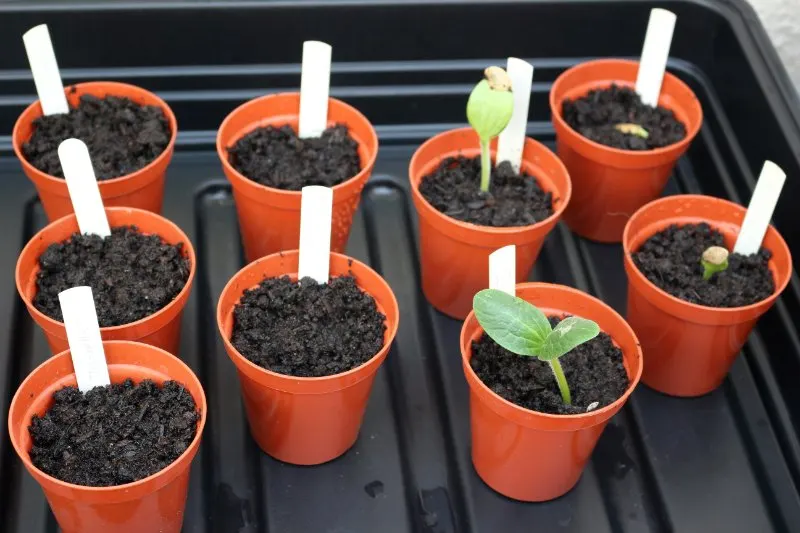
A plant propagator is a device used to propagate plants from existing specimens. Plant propagation is the process of creating new plants from existing ones, and can be done in several ways, including seeds, cuttings, bulbs, and grafting.
Plant propagators provide an environment that encourages and accelerates the propagation of desired plants by providing consistent moisture, temperature, and light levels.
They are typically made up of two parts: the base unit which houses the heating element and thermostat for temperature control; and the tray which holds moisture-filled cells or pots containing soil or rooting material like peat moss or vermiculite.
When caring for propagated plants, it’s important to keep them moist and provide adequate ventilation, as well as maintain consistent temperatures so that they don’t become stressed.
Plant propagators are great tools for both amateur gardeners and professional horticulturists looking to propagate their favorite plants quickly and efficiently.
See Related: Proven Ways to Reduce Waste at Home
Techniques for Plant Propagation
Plant propagation is the process of producing new plants from a plant or group of plants. Propagation can occur sexually or asexually. In sexual reproduction, new organisms are created by the fusion of male and female gametes, resulting in offspring genetically different from each other.
Asexual reproduction occurs when new organisms arise without fertilization, as a result of budding or division, such as with rooted cuttings and stolons.
The following methods are some of the most common ways to propagate plants:
- Leaf cuttings – Cut leaves into pieces with two nodes (the area where leaves connect to stems) on each piece and place in water until roots form; then transplant into soil
- Root cuttings – Trim off pieces with two nodes on each piece and place them in water until roots form; then transplant into soil.
- Stem cuttings – Cut the stems with two nodes on each piece, and place them in water until they form roots. Then transplant them into the soil.
- Air layering – Wrap a long piece of damp material around the stem to create an air pocket. When roots form, cut off the top part of the stem and transplant it into the soil.
See Related: Best Portable Greenhouses to Buy Today
Sexual Plant Propagation
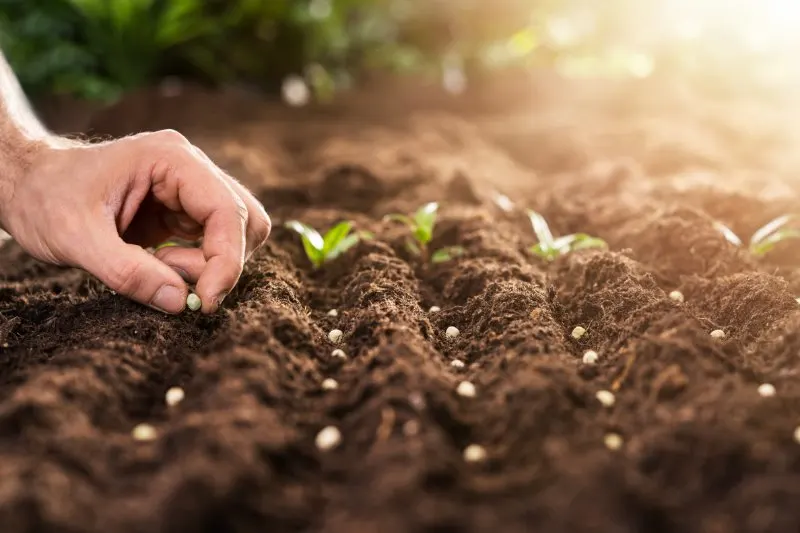
It’s not just you or me, plants have a varied sex life too! Sexual plant propagation is the process of creating new plants from the seeds produced by mature flowering plants. You can also use sexual plant propagation to create new plant babies from bulb or rhizome divisions, as well as stem cuttings and stolons (underground stems).
Sexual propagation may be used in addition to vegetative methods (like cuttings) or in place of them; it allows you to more easily get an exact copy of a parent plant’s characteristics. This is especially useful when breeding for certain traits or color combinations that would be difficult or impossible with other methods alone.
Plants that are traditionally propagated through sexual reproduction include many popular garden flowers such as hollyhocks and lilies; fruit trees like apples and oranges; herbs like basil and mint; vegetables like potatoes; shrubs like roses and lilacs; vines such as wisteria; grasses such as Bermuda lawns; trees such as redwood tree saplings.
Asexual Propagation in Plants
Asexual propagation is the process of a single plant dividing and growing into two new plants. Asexual propagation is also known as vegetative propagation.
Asexual propagation is a common method of propagating plants that are difficult to root from cuttings or those which produce long, thin roots that are prone to rotting. Some plants can be grown by rooting their stems in water and others need a soil or sand mixture to take hold.
Leaf Cuttings
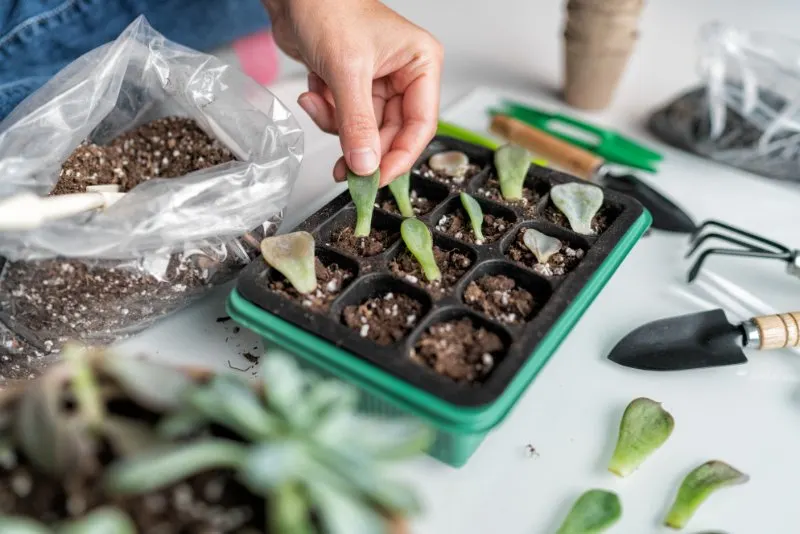
Leaf cuttings are a very easy way to propagate plants. All you need is a sharp knife, some water, and the plant material you want to propagate. How to make a leaf cutting:
- Cut off the leaf from your plant using a sharp knife. If you are propagating from an herb or vegetable, use only leaves that are healthy and free of insect damage or disease symptoms.
- Place the clean leaf in a cup of water overnight so that it can wilt (dehydrate) slightly before planting it into the soil. This helps prevent bacterial growth when it’s time for rooting and transplanting later on!
See Related: Best Glass Greenhouses in 2023
Propagate with Root Cuttings
To propagate with root cuttings, you will need to use a sharp knife to cut the stem. Cut it 2-3 inches below the bottom of the plant and make sure that you have at least 1 inch of healthy root growth above where you made your cut.
Next, place the cut end into moist soil in a pot or tray. Cover with plastic wrap and keep the soil moist until new roots develop (usually within 3 weeks). When new leaves appear on top of your new plant, it’s time to transfer them into larger pots as needed along with new, fresh potting mix.
Layering
Layering is a method that uses the rooting of the parent plant to create new plants. The process involves bending over a branch and securing it onto the ground just below where the leaves end on the stem, then covering it with soil.
This will cause roots to grow from this section of bark, which can then be transplanted as an independent plant once they have grown enough.
In addition to layering, this method can also be used for propagating plants that don’t produce seeds by simply cutting off branches from their parent and placing them in moist earth with their growing tips facing upward.
Single Leaf Approach
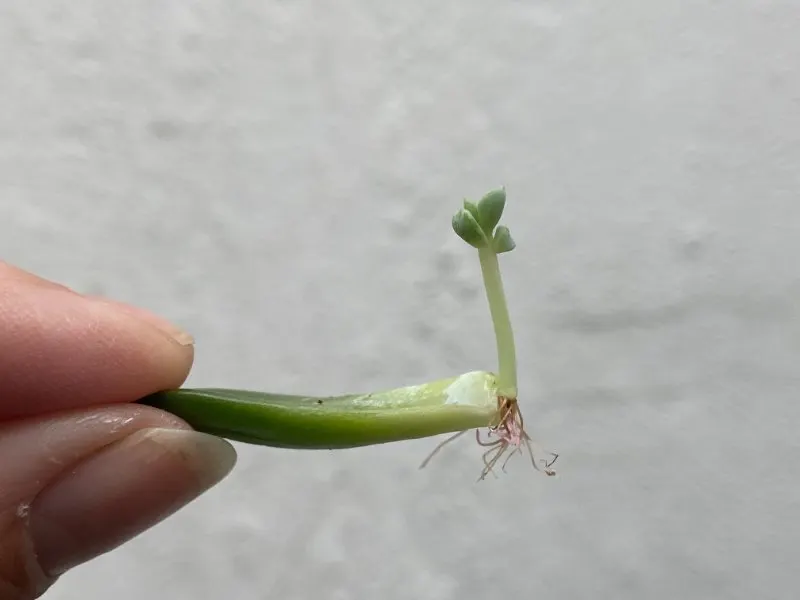
This technique is super simple and will yield a lot of plants. It also works with other plants besides tomatoes. Here are the steps to take:
- Cut off a single leaf from your (e.g.) favorite tomato variety, making sure it has few or no branches and at least 3 sets of leaves on its stem
- Place the cutting in potting soil and press down firmly so that most of the leaf is buried under the soil surface
- Water thoroughly, then place them in a warm location where they will receive lots of indirect sunshine.
Leave the plant undisturbed for at least a month, during which time it will grow roots. Once you see signs of new growth, transplant your tomato plant into a larger pot and begin regular watering again
See Related: Best Lean To Greenhouses | Side of House Options
Pollen Based Method
Propagation from pollen is a relatively simple technique. It involves collecting the pollen of one plant and transferring it to another. This can be done by brushing the stamen with a small paintbrush, or you can use tweezers to pick up the pollen grains with care.
You can then transfer this to your chosen plant by poking it into the flower’s stigma or inside its ovule, which will cause them to grow seeds in about two weeks’ time.
You may have noticed that many plants are capable of reproducing themselves through seed production (as opposed to cloning themselves using cuttings). However, some flowering plants have been observed growing not only new shoots but also new roots directly out of their existing roots—a process known as “root suckering.”
In addition, some types will produce flowers without any pollination at all! This means they’re capable of self-fertilization through their own pollen; however, in most cases, this won’t happen unless there’s another plant nearby producing similar genetic material that would provide an additional source for cross-breeding purposes instead.
Bulbs and Corms
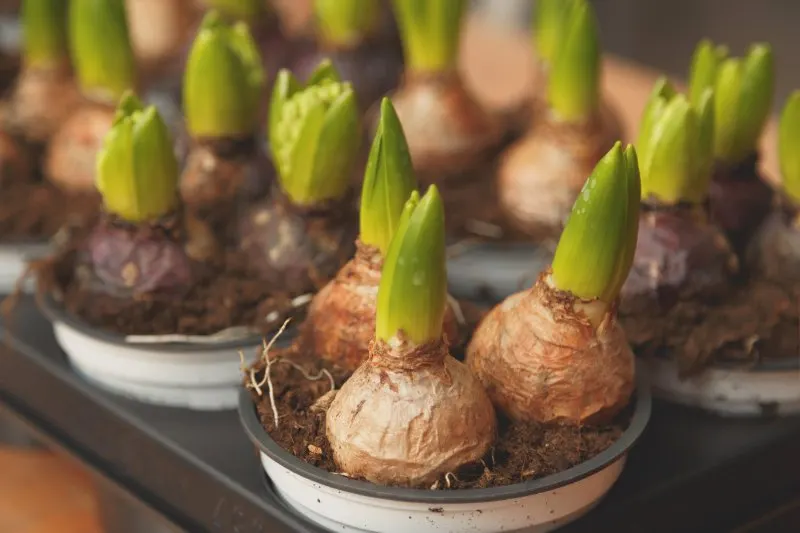
Bulbs and corms are similar in that they are both swollen underground stems of a plant. Bulbs and corms can be planted to grow new plants, but they can also be used to grow new plants from their leaves.
The bulb is the swollen underground stem of a plant that grows just under the surface of the soil. It is made up of fleshy scales and stores energy for future growth. The most common bulbs include onion and garlic!
A corm looks very similar to its above-ground counterpart but is underground with no visible signs on top of it like leaves or flowers would be if it was above ground (see photo). Corms store food reserves so that when conditions are right they can produce new shoots/stems/roots etcetera depending on what type of plant it is!
Seed Based Approach
Growing plants from seed is a great way to save money compared to buying infant plants, but it can be difficult to get right. The first step is choosing the right type of seed for your project. For example, if you want to grow tomatoes in your garden, choose an heirloom variety that’s well-suited for your climate and region (this will help ensure that they grow well).
Then, prepare the soil by adding compost or fertilizer. Once this is done and the soil has dried out somewhat (dampen it if necessary), plant your seeds about two inches apart in rows spaced three feet apart from each other.
Water them thoroughly so they’re moist but not soggy: once per day should do it! Keep track of how long it takes before they germinate (this varies based on temperature). When they have sprouted up above ground level enough that their leaves are visible above ground level–usually within one week–water them again lightly before moving on harvesting time!
Grafting the Hardwood Cuttings
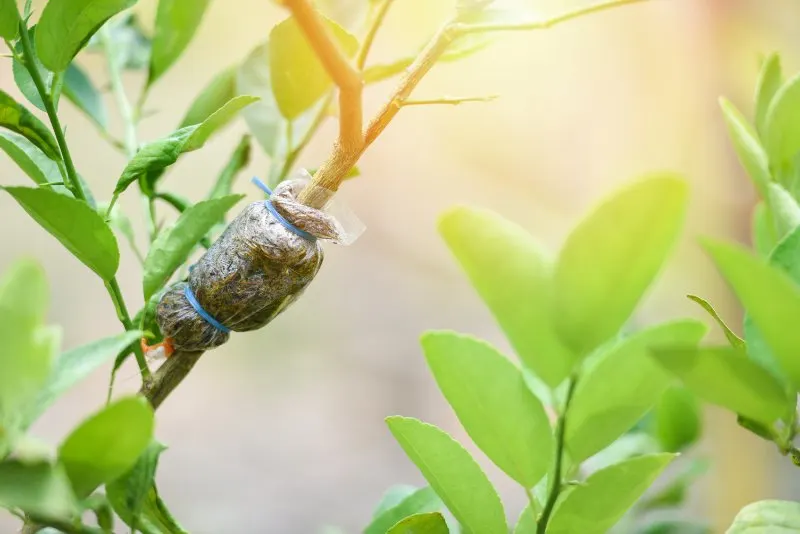
Grafting is a process of joining two plants together, usually at their rootstock, and doing hardwood cuttings on the existing plant. This can be done on many woody plants including fruit trees and ornamental plants.
Grafting is used to combine the best qualities of two different plants, such as disease resistance from one plant to another or dwarfing from one plant to another. Grafting can be done in many ways:
- Sharp knives are used to cut through the bark on both sides of the stems
- The cut surfaces are then scraped clean with a knife
- The bark edges are held together by rubber bands or tape until they heal over
The grafts are then wrapped in plastic to keep them from drying out.
Best Time to Propagate Plants
In order to be successful at propagating, it’s important to understand the best time for propagation. The timing for propagating plants depends on the type of plant you are working with, as each plant has its own unique needs and preferences.
Generally speaking, the best time to propagate plants is during the spring and early summer when plenty of sunlight is available and temperatures are warm enough to encourage successful rooting. This is when most plants have an ideal balance of energy and nutrients, making them easier to propagate with greater success rates.
However, some types of plants can also be successfully propagated during other times of the year as well. By understanding when each type of plant should be propagated, you can ensure your efforts are rewarded with vigorous growth and beautiful blooms in no time.
How long does a plant cutting take to grow?
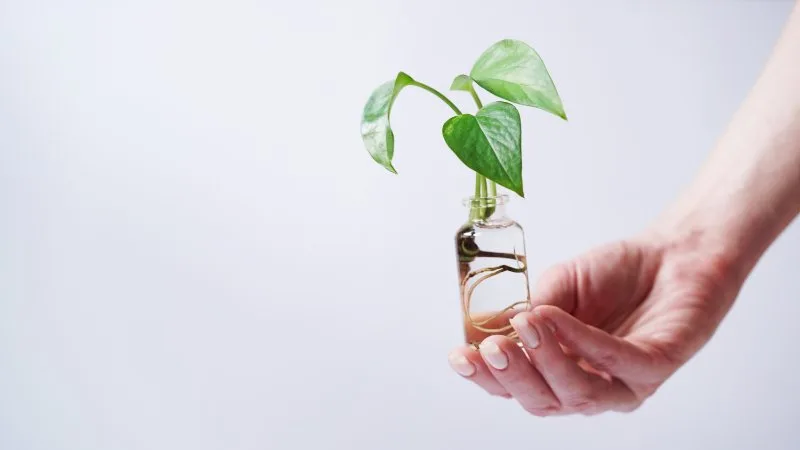
Just like any other living thing, plants grow at different rates. For example, a cutting from a rose bush might take one to three years to produce flowers. But what about that cutting of basil you made last month? It’ll probably only take a few weeks for it to start sprouting new leaves and then flowering (if you’re lucky).
If you want to know how long it will take for your plant cuttings to grow into full-sized plants, there are several factors that go into the equation: your environment, the type of plant being grown, and its age at the time of propagation (more on this later).
But first things first: when do you need to water? The answer is simple: when they need it! You should check every so often; if they’re still damp then great! If not then give them another drink until they are fully hydrated again.
Conclusion
If you’re looking for a way to expand your collection of outdoor and indoor plants or increase your yield, there are many options available. You can use cuttings from the mother plant or propagate from seeds or bulbs.
You can also try grafting two different varieties together to make a unique hybrid plant that has the best qualities of both its parents. Propagation is an easy way to grow more beautiful flowers and vegetables in your garden!
FAQs
What is the propagation of a plant?
Propagating plants involves increasing the number of a particular plant species by creating baby plants from an existing plant. There are two main types of propagation: sexual and asexual. In nature, reproduction is generally achieved through sexual reproduction or generating fruitful crops.
What are the 4 methods of plant propagation?
The primary methods of propagation are leaf cutting, hardwood cutting, ordinary layering, and air layering.
What is the easiest way to propagate plants?
If you are propagating plants from cuttings, the easiest way to do so is by using a rooting hormone.
Related Resources
- Different Types of Ivy Plants (+ Examples)
- Types of Tundra Plants Apart of This Biome
- Top Most Endangered Plants Around the World

